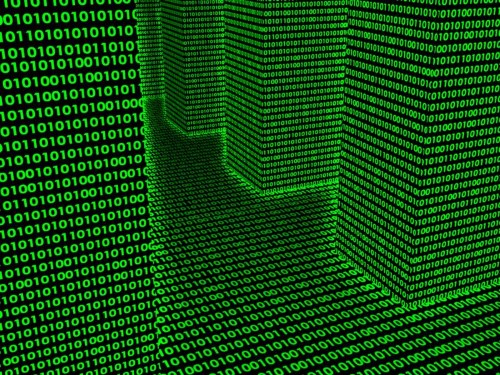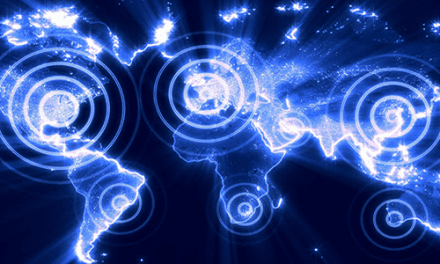A honest look at the state and value of sensor technology in Senior Living
A few weeks ago I published an article titled “The Perfect Technology Solution for Senior Living” based on a conversation I had with Steve Smith the VP of Technology for Vigil Health Solutions about his “high level” view of technology in the Senior Housing Space. This is a continuation of a look at technology and senior housing. Over the last few years we have seen a number of companies playing with sensor technology including Vigil Health Solutions. Here is what Steve had to say about the current state of sensor technology in senior housing.
Sensor Technology and Vigil
Currently Vigil is using sensor technology in three areas:
1. Fall Detection – This is in the form of pads that residents sit on and if they fall out of the chair resident care givers will be immediately notified via silent pages.
2. Bed Exit Detection – In most cases this sensor technology is used in conjunction with the comprehensive Vigil Dementia System, but can be used as an early warning of night time elopement and in a number of other ways.
3. Motion Detection – Vigils uses motion sensor detection only as a part of the complete Vigil Dementia System. The reason for this is that in their early years they discovered that stand along motion detectors would generate so many false positive calls that before long care givers would either ignore them or turn them off. The end result being more cost to the senior community and no benefit to the residents or staff. The Vigil Dementia system includes software that evaluates the constellation of signals coming from the sensors and is able to largely eliminate false positive calls.
Motion Detection is cool . . . but
I asked Steve about motion detection which seems like it should be the next cool innovative thing. Steve is seeing a bunch of exploration in the motion sensor space including things like motion detection, medication monitoring, toilet flushes and activity levels (along with weight, respiration, heart rate) and the Holy Grail, predicting and preventing falls. Here is the challenge today – it is possible to monitor a lot of these things, but it adds complexity and cost to the operation of a senior housing community. It also generates data . . . lots of data and from Steve’s perspective it is not so clear what you can actually do with that data. In other words, how does it benefit either the residents or the community? Particularly as you look at biometric monitoring, it would seem the best use of the data would be to identify trends. Then becomes the question of who determines the trend thresholds and what happens with those thresholds are breached. Convincing a senior housing community that changing a battery for every resident once a year is worth the investment requires a real payoff in resident safety or satisfaction. Small portable pendants can show this return on resident safety and self determination. A similar time investment (15 minutes per resident per year) in looking at data trends has to pay off, and not in “false alarms” or “but we missed the signs” type of ways – how can you prove that it saved one hospitalization? Or improved a resident’s life enough that they would be glad to pay for an additional 15 minutes of care a year? And how do you keep staff trained in the best practices that are required to keep this working? Are you using or have you used motion senior technology? How are you using it? How much value has it added to your community? The next article in the series will take a look at fall detection and prevention (which are very different).
If you like this article it would be a great honor to have you subscribe to our mailing list HERE.









We have had the Vigil system in for 6 years. It is a fine system, but in reality, we have turned most of the sensors off because they really don’t give us the information we need or there are multiple false alarms. It all still comes down to staff doing a good job monitoring residents which is best done visually.
First, I am really glad you are happy with the Vigil system. It is, as you can imagine, something we are proud of.
If you have Independent Living residents in a Dementia room then adjusting the room rules to match the resident does make sense and “turns the sensors off”. If, however, a resident has memory impairment, we would be glad to work with you to enable the appropriate rules to make your residents safer and staff more efficient. Call our toll free number (1-877-850-1122) and tell them Steve (or Steve!) sent you!
You also made a great point about one of the challenges with more sophisticated technology. Sometimes technology ends up requiring more effort in order to do it’s job properly. At least in the case of Vigil, ultimately the system actually reduces workload and improves quality of life, but it does mean putting more effort and time into understanding the system so that it becomes a tool that works for you rather than something that becomes a burden. Even with very low staff turnover, this can be a challenge.
I would close by adding that close to half of all our systems include the motion sensor based dementia system and our users find that it does three things:
1. Gives staff the ability to know if there is a problem with dementia residents throughout the night.
2. It radically reduces sleep disruption
3. It is a powerful marketing tool.
Thanks for helping elders,
Steve Smith
From LinkedIn Groups
Does anyone use a motion key Fob system or something similar? Allowing residents to open apartment dor just by walking up to it? Device on necklace or wrist that only opens there door. Thinking would be nice for Assisted Living environment.
By Kimberly Kenna
Pretty certain someone has technology like Kimberly speaks of. My mom is in a CCRC and she has a plastic (info imbedded) card that allows her to open many doors, however her neighbor with dementia has a similar card that does not allow same exterior doors to open. I don’t know what system.
As to ‘too much data’ (shameless plug here as I work with New Care, the software company that developed SilentAlert), the SilentAlert monitoring system records a tremendous amount of sleep data, but only significant changes are highlighted in the software for AL caregivers. At LeadingAge in Dallas a lot of AL & Memory Care directors appeared very favorably impressed with the simple plug and play, low cost system and specifically that the collected data was presented (web-based) in useful format.
Not plugging any particular company — but there are other sensor-based home monitoring systems in senior living settings — Healthsense, BeClose, AFrameDigital, Care Innovations, GrandCare Systems, Independa. And the new kid on the block, Lively, may end up in senior living settings, even though it is initially launching as a consumer offering.
And wearables in the PERS space like Philips Lifeline with AutoAlert (fall detection), Numera Libris, and MobileHelp.
At LeadingAge one of the coolest (not yet commercially available) sensor technologies was in the floor,(in the IdeaHouse) under carpet from Georgia company that is working to make ‘smart carpet’.
I give Steve some latitude (since he openly tells us where his paycheck comes from), yet I agree there is a LOT of new technology coming into this market.
OK – shameless plug here – New Care Solutions introduced SilentAlert monitoring in memory care and assisted living about a year ago and should be on the list too. Web-based tool, plug and play, data driven. (Full disclosure, I work for New Care). John
We know that your client base has become very familiar with the concept of personal emergency response systems. However, the rapidly changing face of technology is making traditional ways of delivering this valuable service more challenging. Many seniors today are choosing to eliminate their land line. This makes a traditional PERS device inoperable in their home. Connect America is able to bring cellular/GPS based PERS to you and your clients TODAY!! We offer both a mobile/GPS option and an in home Cellular option, so you can serve an even wider population.
Healthcare continues to change – Regulation, reimbursement, and requirements become more complex seemingly every day. We realize that It is important that your organization has partners that understand your mission and that can provide you with the tools to better serve your participants. Medical Alert by Connect America brought professionals with many years’ experience in the PERS industry together to create a customer focused organization. We are large enough, recently surpassing a milestone of 230,000 subscribers, to give you and your participants confidence and peace of mind, and small enough to give you and your participants the the personal attention you want and need by never losing sight of our mission to be the number one PERS customer service company!
We are very aggressive concerning pricing, service, technology and marketing support to ensure the success of our partnering mission. We are looking forward to the opportunity of sharing with you our state of the art technology, our customer service that is second to none and our passion to ensure the safety of your clients. We can blend our services to assist those that desire to remain at home with dignity and peace of mind in the communities that you service.
We offer a variety of Partner Programs. Please feel free to call me anytime at 484-571-2040 if I can be of any assistance.